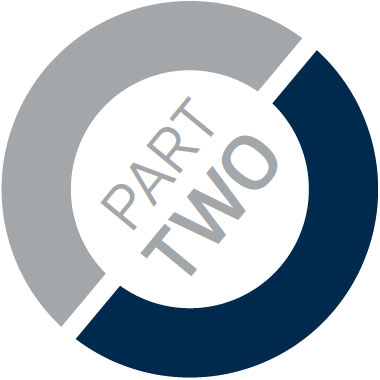
In Pursuit of High Income, Without Undue Risk?
Individual investors frequently seek high-yield strategies but aim to mitigate potential downside risks of high-yield investments such as defaults, drawdowns, and volatility. Investors may be somewhat relieved today as risk-free U.S. Treasury yields offer more meaningful yield than they have in over 15 years. The problem, of course, is that rising rates have decreased the value of existing bond holdings and in today’s persistently volatile fixed-income environment, a 5% annual yield can disappear via a capital loss in just a few days. Additionally, rates have moved higher because of higher inflation and future inflation expectations, and the real return of a 5% annual yield may be less than what it was 10 years ago.
A Legitimate Option: Two Part Strategy
It might be helpful to break apart the fixed income challenge above into two parts. Part one: solve the fixed rate conundrum of potential capital losses; part two: combine it with a yield maximizing strategy while not sacrificing the first part.

The uncertain and rising rate environment seems conducive for an asset class known as senior secured loans (SSLs), which are floating rate corporate loans that have existed for over 25 years. The floating rate nature of the loans reduces the risk of capital loss because the loan rates adjust with rising and falling interest rates, keeping them in line with the market. An additional advantage of these loans is that they are both senior to other loans and bonds issued by the corporation, and also secured by company assets. Thus, they have first claim to corporate cash flows and are backed by corporate assets. In part for these reasons, senior secured loans have had historically low default rates. SSLs, as measured by their primary index,¹ also have had an attractive historical track record.
Part Two: Yield Enhancement

How can investors generate higher yields while also investing in these loan instruments for their attractive characteristics? Instruments called collateralized loan obligations (CLOs) were devised several decades ago precisely to meet this market need. It’s an imposing term, but not so complicated. We can view CLOs as similar to banks, and the senior secured loans to be like the individual mortgages and business loans that banks make to individuals. CLOs buy SSLs to build a diversified portfolio of loans, and finance their acquisitions through various layers of capital from CLO investors. Some CLO investors elect to receive the very first cash flows from those underlying loan payments and thus receive the lowest yields. Other more risk tolerant investors who are confident that the underlying loans will pay through maturity, like they generally have over long periods of time, are rewarded with much higher yields. The final category of investors, known as the CLO equity tranche, have been historically rewarded with high distribution yields. In the last 20 years, CLO equity distributions have averaged nearly 15% annually, with very few low return years.
CLO Equity Annual Distribution Yields²
The key advantage is that with CLOs, investors don’t have to compromise on the first part of the strategy which is to insulate income investments from the capital destruction of rising interest rates.
Why CLOs Now?
CLOs are generally an attractive option for income-seeking investors, especially during a very uncertain interest rate environment. Current market conditions have made CLOs even more attractive:
- Investors can receive greater investment yields relative to a year ago. CLO debt yields have increased to low double-digits as of Q4 2023, which are levels seen in CLO equity just 6-12 months prior, but also benefit from a more stable asset value, since CLO debt is paid prior to equity and higher in CLO capital stacks.
- Senior secured loan default rates are low. Current default rates of 1.9% are below long-term historical averages, indicating little turbulence in the SSL market. Since SSLs are the building blocks of CLOs, their performance is an integral part of CLO performance.
- CLOs are structured to perform through all economic environments which is top-of-mind given market concerns of a near-term recession. Whereas public equities have historically experienced sensitivity to economic recessions, CLOs may navigate periods of economic uncertainty more successfully given the senior position of CLOs’ underlying loans.
With high stock valuations and uncertain bond yields, individual investors should consider capitalizing on current return and risk dynamics in favor of CLOs to generate high yields and help insulate their portfolios from fluctuating interest rates.
¹ Morningstar LSTA Leveraged Loan Index
² Source: Kanerai, Intex, Markit, Barclays Research, includes CLO 1.0 and 2.0 broadly syndicated loans. For the periods shown above in the chart, CLO indexes reflecting total returns did not exist, thus the chart only reflects available distribution level data. Total returns could have been lower or higher as yields do not include return of principal. Data thru September 2023. Does not represent total return experienced by investor. Past Performance is not necessarily indicative of future results.

